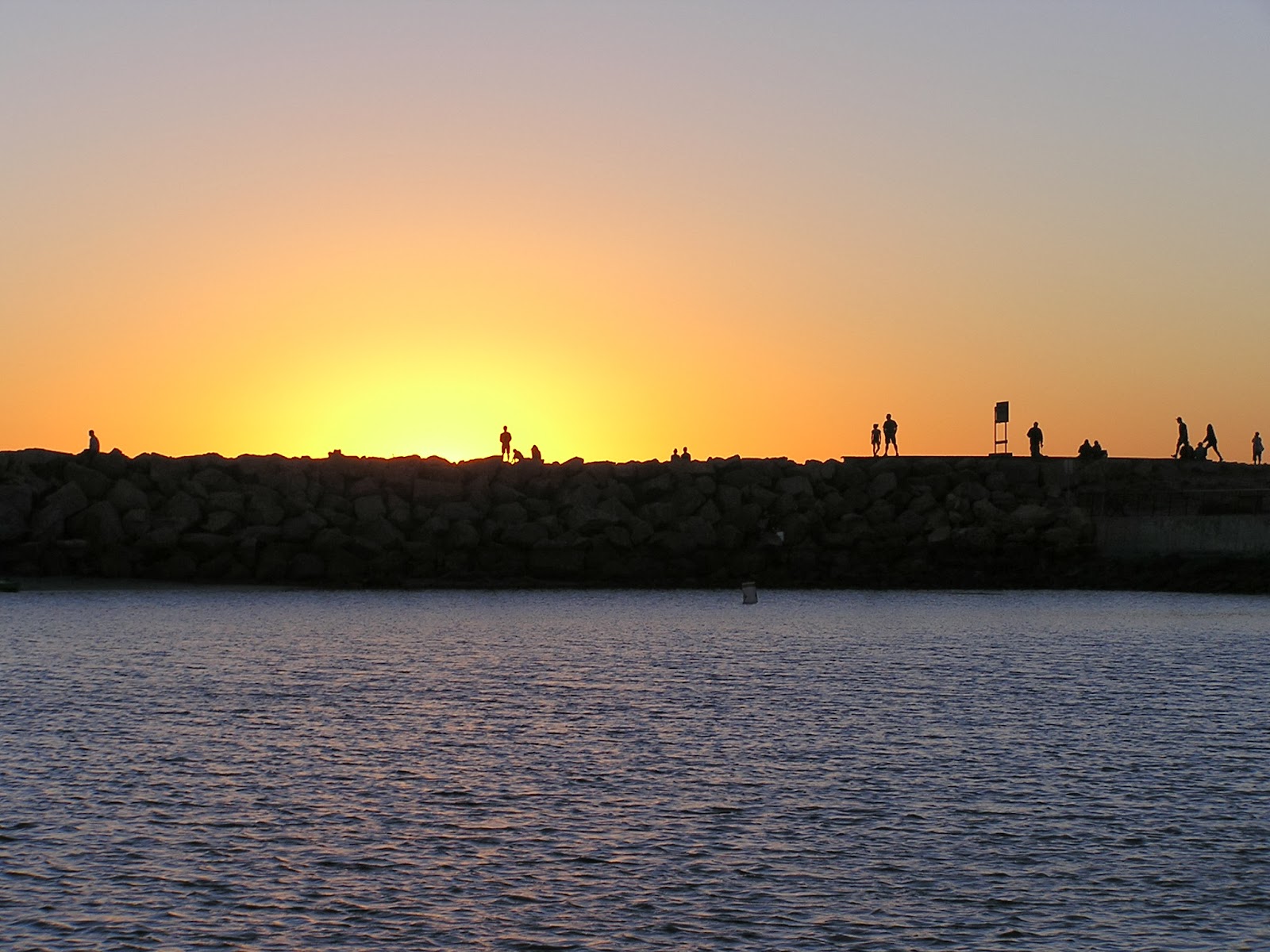We had a very enjoyable three days in Ensenada, and by the 16th we were ready to continue south. So Finisterra sailed at 1030 that morning under a beautiful clear sky and a light northwesterly breeze. Our course took us out of Bahia De Todos Santos by way of the channel between Punta Banda and Isla Todos Santos. Once out of the bay we bore off toward our next destination, Turtle Bay, which lies about 300 nautical miles down the coast of the Baja peninsula. About that time the wind fell to almost zero and we rolled up the jib and started motorsailing under the main alone. As it turned out, we had less than ten knots of breeze out of the northwest almost all the way to Turtle Bay so we ended up motorsailing the entire distance except for a few miles when the wind backed or veered enough for us to sail, which wasn't often.
 |
|
We entered Turtle Bay just after sunup on January 18th and anchored a couple hundred yards from the rickety old pier in front of the village. There were no other sailboats in the bay except for a couple of derelicts anchored off in the distance. In the past we've always anchored and Enrique, the local fuel seller would bring diesel out in his specially equipped panga. But this time he told us to bring the boat up to the pier, where they have cobbled together a couple of floats to make a rudimentary fuel dock. We took on 35 gallons of diesel and gave the attendant a thirty peso tip. The poor guy nearly fell off the dock when he realized I didn't want any change back. The people in Turtle Bay don't have much, and thirty pesos, about three bucks, is a nice spiff.
 |
| A beautiful sunset every evening |
While at anchor I was able to download some weather data and the forecast was for more light air for the next few days, so we didn't waste any time in Turtle Bay and by 1030 we were headed out of the bay toward Bahia Santa Maria, about 240 miles down the coast. The wind remained very light and consistent out of the northwest so we continued under power. The sea temperature rose rapidly to 68 degrees, making the nights reasonably warm. Weather in this region can be cold and stormy as easily as warm and sunny, so, remembering how we froze on the passage north through these waters three years ago, we brought plenty of heavy cold weather gear and I was grateful that we never had to use any of it. With seven knots of wind coming straight up the tailpipe on a boat moving at seven knots, the apparent wind is zero, so even though the daytime temperatures were in the sixties, we were quite comfortable.
 |
| Finisterra's cockpit. On the left are the Lifesling and MOM unit. The bag on the stern rail holds fishing gear. The GPS is mounted on a swivel so it can be seen from anywhere in the cockpit. Notice that the compass cover is closed. We almost never use it anymore. All of our navigation tools are set up for true rather than magnetic directions. |
 |
| The port side of the cockpit carries the outboard motor and hoist, GPS and Sirius XM radio antenna. Notice two rods mounted on the stern. Lisa rigged one with a cedar plug and the other with a pink & white. Off Mag Bay we sailed through a school of yellowfin tuna and both reels lit up almost simultaneously. We caught two little yellowfin, about 12 pounds each. We kept one and released the other. |
Watches on this passage, like the last one, consisted mainly of relaxing in the cockpit, snacking, writing up the log, reading, watching beautiful sunsets, stargazing on night watches, and then watching the sun come up.
Off watch, we would sleep, read, relax, repeat.
Finisterra was off the entrance to Bahia Santa Maria at 1900 on January 19th. We had planned to anchor in the bay for a day or two, but with the weather so fine we decided to continue south toward Cabo San Lucas instead. Later that night the wind finally arrived and we sailed through the night on a broad reach. It didn't last, though, and by morning we were motorsailing again.
 |
| A straight wake on a sea of tranquility. |
We passed Cabo Falso around 2200 on January 20th and were tucked into a slip in Marina Cabo San Lucas by midnight, thus completing what was by far the most pleasant passage down the Baja coast I've ever done.
The day before we left Ensenada the refrigerator compressor stopped working. Faced with the prospect of losing all our frozen food, we quickly packed the freezer with ice. Worse than losing our food, we were also in danger of having to drink warm beer and wine. Not acceptable. Fortunately, the day after we left the compressor started working again. I'm not sure why it stopped or why it started again so I'll dig into it after we arrive in La Cruz.
I have Nobeltec navigation software on my laptop and have used it for years as my primary navigation tool. On this trip we decided to try out Inav-X on our Ipads. It is vastly superior to the Nobeltec and the charts loaded into the Garmin GPS. I never even opened the laptop.





.JPG)
.JPG)
.JPG)
.JPG)
.JPG)
















